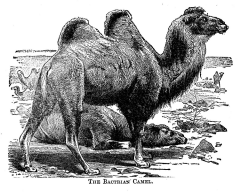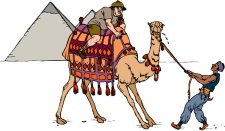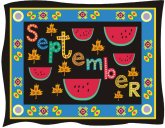Monday, 23 May 2005
National Walk to School Week
Topic: In the News
Today is the start of National Walk to School Week. In October, there will be another event, International Walk to School Week. If your children's schools are not taking part in the National initiative then, hopefully, they will promote the International event in the autumn. Why is this important? Well, health for one thing. Children today don't get enough exercise and walking or cycling to school will help to combat child obesity and will keep them fit.
My grandchildren walk the mile or so to their school each day but, nationally, it seems that this is becoming a
dying practise. Part of the reason is that parents worry about road safety or 'stranger danger'. They are 'rushed off their feet' so they take the easy way out and use the car. Did you know that the
school run contributes to 1 in 5 of all cars during the morning rush hour? This increase in road traffic causes congestion and is directly related to the number of car accidents involving school children, which rise during term time. It seems that this accident rate could be dramatically lowered by the implementation of
staggered school hours. This is something which is already happening in the Chichester area with at least one secondary school starting extra early — although I think the real reason was the availability of school buses!
If walking is out of the question, what other action can you take? Well, car sharing is one answer - organise a rota to take your child and your child's friends to school. This simple solution will have an impact on the problem of school gate congestion. Many local schools have already registered with the
West Sussex Young TransNet to formulate School Travel Plans and make school journeys safer. Make sure you support your school by doing your bit as a parent.
Sunday, 22 May 2005
Sir Laurence Olivier (1907-1989)
Topic: Memories

My late sister, Pauline, collected many autographs of famous actors, including at least ten signed photographs of the British actor,
Sir Laurence Olivier, all of which she obtained personally. This photograph is of him in the part of Hotspur from Henry IV part I, probably taken in 1945, when he starred in this role on the London stage. Laurence Olivier seemed to slip naturally into every Shakespearean role he played and he brought the characters to life with an intensity which was, and still is, the envy of many other actors. As a young teenager, Pauline went to see virtually every Shakespeare play he appeared in at
The Old Vic in London's West End. I don't think my father was very keen for her to go to the theatre so, a friend's mother aided and abetted her in a deception by 'inviting her for tea' so that her daughter and Pauline could attend matinee performances together without my father's knowledge. They would wait outside the stage door, whenever possible to collect autographs.
When she left school, and started working, (I remember her telling me that #5 per week was an excellent salary for a secretary in London, immediately after the war), Pauline had more freedom to indulge in theatre going. I think she had a bit of a 'crush' on Laurence Olivier at the time and she waited for him so often, he began to recognise her. I can remember her telling me that she had felt quite faint when he once placed his hand under her trembling hand to steady the page he was signing! He was aware of her reaction and had a huge grin on his face! I suppose you could say my sister was an original 'groupie'. At the time, I was much too young to join her on her trips to the theatre but I heard all about them. She told me of the occasion when 'Larry', great actor that he was, sat on a chair which suddenly collapsed. It wasn't meant to, she definitely knew it wasn't meant to, because it was the third time she had seen the play. But, to the rest of the audience, it passed virtually unnoticed as he took it all in his stride.
Often described as the 'greatest actor of the twentieth century', Laurence Olivier was born on the 22nd May 1907 at Dorking, in Surrey. He made some 14 films in the 1930s, including "Fire Over England", his first film with Vivien Leigh, whom he later married. However, I think that one of the best films from this era was, "Wuthering Heights", in which he starred as Heathcliff. Made in 1939, in black and white, of course, his burning portrayal of Heathcliff has made it into an ageless classic. I saw it much later on television and it remains one of my favourite films. He went on to star and direct in many more films right up to 1989. Those I definitely saw include "Henry V", which was originally released in 1944 as a 'propaganda' film, Richard III (1955), "The Prince and the Showgirl" (with Marilyn Monroe in 1957), Spartacus (with Kirk Douglas in 1960), Sleuth (with Michael Caine in 1972), Marathon Man (in 1976 - I think of Dustin Hoffman every time my dentist uses a drill!) and "A Bridge Too Far" (1977).
I finally got to see Laurence Olivier on the stage when I was fifteen or sixteen. He was starring in "The Entertainer" in Brighton. I remember I went straight from school dressed in my stuffy grey uniform and complete with satchel! I had a seat on the aisle. I was totally unprepared for the scene in which a nude model appeared on the stage. I remember feeling extremely embarrassed and I'm sure I went bright red. Certainly, I didn't dare look at the gentleman sitting on my left!
Laurence Olivier was knighted in 1947. In 1970, he was made "Baron Olivier of Brighton" for his services to the theatre, an honour which entitled him to a seat in the House of Lords. In 1981, Lord Olivier received the Order of Merit. He died on the 11th July 1989 in Steyning, West Sussex, where he lived with his third wife, Joan Plowright. He is buried in '
Poets' Corner' in Westminster Abbey, the second actor to receive this honour, along with the 18th century Shakespearean actor, David Garrick.
Friday, 20 May 2005
Energy for Life
Topic: Nature and Our World
Did you watch last night's "Question Time" from Edinburgh on BBC
1? One of the questions was, "Would the panellists prefer either a wind turbine or a nuclear power station in their back yard"? I wonder what people in this country said when the first windmills were being built in the 12th century for milling grain? Were they a 'blot on the landscape' in the middle ages? Now we think that windmills are a picturesque addition to the landscape, like our own local mill up on
Halnaker Hill, near Chichester. Some windmills have been lovingly restored to full working order such as
High Salvington Mill near Worthing. I remember visiting that windmill with my sister in my late teens. It was being used as a tea room and we 'partook of the refreshments'. We were the only customers late that afternoon and the gentleman in charge was friendly and chatty. We admired the, at the time, somewhat derelict mill and asked how old it was. He invited us behind the scenes on a little tour of the building and showed us the old mill stone. I remember being invited to pull on a rope - he then told me that I had just lifted one ton! I was
very impressed.
To get back to the question of wind turbines versus nuclear power stations; where practicable, I would choose the wind turbine generator every time. They are not as picturesque as windmills but, who cares! Initially, they are much cheaper to install and maintain then building a large nuclear power station and the amount of pollution and greenhouse gases they produce is negligible. Okay, so nuclear power can be very cheap to produce and creates no air pollution, until there is an accidental release of radioactivity, such as the Chernobyl disaster in 1986! Then there is the problem of the disposal of dangerous radioactive by-products, which can remain hazardous for thousands of years. Until, and if, we learn to properly harness nuclear fusion (combining atoms) instead of nuclear fission (splitting atoms), this will be the main drawback to nuclear power.
This debate raises a deeper concern. From the time of the Industrial Revolution, people in Europe have relied on fossil fuels such as coal and petroleum to produce energy. In many third world countries, they still rely on wood to cook and to keep warm. This unrelenting demand for natural and fossil fuels is stretching the planet's resources and alternative sources of energy must be found, and soon. One solution, is the harnessing of wind power, together with solar power and wave power. As long as our solar system exists, we shall have waves and winds and solar power, free energy to use without adding to the greenhouse effect we hear so much about. Since the advent of the car, the worldwide demand for petroleum has been steadily increasing and this rate of demand cannot be sustained for many more years. Today's oil fields will, eventually, run dry and humanity will be forced to find an alternative solution; perhaps electric or hybrid cars with petrol motors kicking in on motorways to start with. Research is also being undertaken into producing a car with
hydrogen-powered fuel cells. This would be clean and sustainable, when they find a way of reducing the cost. Perhaps, one day, they will discover how to harness
gravity or magnetism, who knows!
As a small child, I can remember asking my sister, Pauline, where
petroleum and petrol came from. I knew it came from oil wells, but how had it got in the ground in the first place? At the time, her answer sounded quite plausible to me - dinosaur wee! Well, they were huge creatures and must have had huge bladders! Actually, the natural process which forms petroleum still continues today, as it was formed from plants and animals living in the warm seas that covered the earth millions of years ago. As they died, they piled up on the sea bottom, sunk under their own weight into the sea floor, eventually to be covered by tons of sand and mud. Under pressure, and over millions of years, this dead sludge gradually turned into dark liquid trapped in the pores of the earth. Some found its way into 'pockets', forming today's oil fields and, occasionally, oil rose to the surface creating sticky tar 'lakes', death traps for many prehistoric creatures. Early man made use of it to make torches, waterproof baskets or the seams of ancient ships. The Ancient Egyptians used bitumen to preserve their mummies; the Chinese used petroleum for heating and Red Indians used it as paint, fuel and medicine. Today, petroleum is refined or distilled to make petrol, paraffin, lubricants, waxes and asphalt. But the rate we use it up is much faster than the time it takes the earth to produce it and the truth is that it will probably run out in a hundred more years.
Unfortunately, the refinement and burning of fossil fuels, such as coal and oil, releases sulphur dioxide and nitrogen oxide into the air, impurities which are a major cause of acid rain, together with large amounts of greenhouse gases, such as carbon monoxide. This is affecting our climate, our forests, our seas and our lakes. Society is irresponsible, too; we waste an enormous amount of energy - just look at all those neon advertisements signs you see in London or New York! Our street lights are wasteful, directing light in all directions instead of straight to the ground where it is needed.
All new houses should be better insulated and should incorporate solar roof panels. Why not have them on cars, too - they could boost the battery and perhaps even power a car for short urban shopping trips. More research should also go into developing a viable solar-powered oven for those third world communities currently relying on wood or camel dung for essential cooking purposes. We should be doing all this
now - not leaving the problem for our great-grand children. If we don't do something about the pollution to the environment, about deforestation and over-fishing, the harm we are doing to our beautiful planet, to its bio-diversity and, ultimately, to humanity itself, could be permanent and lethal.
Tuesday, 17 May 2005
Humph! Said the Camel
Topic: Poetry and Poets
In his
Just So Stories, originally written for his daughter and published in 1902,
Rudyard Kipling describes 'How the Camel Got His Hump'. The story goes that, when the world was new, there was a Camel who did not want to work for Man and who was
most 'scruciating idle; and when anybody spoke to him he said 'Humph!' Just 'Humph!' and no more. The Horse, the Dog and the Ox got very angry and so, when the
Djinn in charge of All Deserts stopped by to chat, they told him all about the Camel's laziness.
The Djinn went to see the Camel, who said, 'Humph!' He asked the Camel to work. 'Humph!' And then, the Camel's back puffed up
into a great big lolloping humph. The Djinn told the Camel that, as he had missed three days of work, he would now be able to work for three days without eating because he could live off his humph.
And from that day to this, the Camel always wears a humph, (which we now call a hump). But he never caught up with the three days he missed and he never learned how to behave.
THE Camel's hump is an ugly lump
Which well you may see at the Zoo;
But uglier yet is the hump we get
From having too little to do.
Kiddies and grown-ups too-oo-oo,
If we haven't enough to do-oo-oo,
We get the hump --
Cameelious hump --
The hump that is black and blue!
We climb out of bed with a frouzly head,
And a snarly-yarly voice.
We shiver and scowl and we grunt and we growl
At our bath and our boots and our toys;
And there ought to be a corner for me
(And I know' there is one for you)
When we get the hump --
Cameelious hump --
The hump that is black and blue!
The cure for this ill is not to sit still,
Or frowst with a book by the fire;
But to take a large hoe and a shovel also,
And dig till you gently perspire;
And then you will find that the sun and the wind,
And the Djinn of the Garden too,
Have lifted the hump --
The horrible hump --
The hump that is black and blue!
I get it as well as you-oo-oo-
If I haven't enough to do-oo-oo!
We all get hump --
Cameelious hump --
Kiddies and grown-ups too!
Monday, 16 May 2005
Buy Me A Camel!
Topic: In the News

No, I'm not joking. You can really buy me a
camel for just #95! Oxfam Great Britain has just launched their summer, '
Unwrapped Gift Catalogue', with a range of gifts which will be available until the end of September. Of course, I wouldn't actually get the camel, just a card! No, these are gifts in support of Oxfam's humanitarian work and they will benefit a community in one of over 70 countries, thereby helping Oxfam to tackle worldwide poverty and suffering. What a brilliant idea for that awkward person who seems to have everything - now you can give them a marvellous present and benefit a charity at the same time. If you are that 'awkward person', then get a gift catalogue from Oxfam for your friends and family to browse through.
The gift choices range from camels, cows and goats to a whole farmyard of livestock for #1,200. If you don't want to buy an animal, you can purchase school dinners for 100 children for just #6, fill a satchel with school equipment for just #16, buy medicines for a whole village for #100 or provide safe water for 1000 people for #720.
If you are getting married, Oxfam now offer an Unwrapped 'Wedding List' Service as well. Personalised wedding lists can easily be created after you have registered
here. If you already own that microwave oven, coffee maker, food mixer, or whatever and you are stuck for wedding gift ideas - why not give this a try?
In the meantime, if you are feeling generous, I would really, really, like a camel!
N.B. My grateful thanks to Oxfam GB (tel: 0870 333 2700) for permission to use their small camel picture
Updated 16 May 2005 17:17 BST
Amazing Animals: The Camel
(No. 2 in my series)
Topic: Nature and Our World

I was quite young when I had my first encounter with a camel. My sister, Janine, had taken me to
London Zoo and we spotted the 'Camel Ride' - I eagerly joined the long queue. Oh, yes, please... I want to wait, I told my sister. It was a huge creature, a Bactrian Camel with two humps, thick, long shaggy ruddy-brown hair and enormous feet. The 'seat' was one of those contraptions with two benches suspended laterally and seating several children on each side of the camel's humps. It was a very long wait but finally I got to the front of the queue, standing eagerly by the steps ready to climb up onto the bench seat. At last the camel returned and its passengers climbed down. I can still feel my trembling excitement when I was suddenly whisked up into the air by the Keeper and, because I was so small, placed not on the bench seat, but on the camel's neck! I could see where we were going; I could touch its hair. I was riding a camel!
Many years' later, when I was twenty-three, I visited the
Land of the Pharaohs and had my second encounter with a camel - an Arabian camel, this time, with one hump. Its days were taken up patiently transporting countless tourists the short distance to that crumbling wonder of the ancient world,

the
Great Pyramid of Khufu (Greek name Cheops). Never having had much to do with horses, I took to riding the camel straight away. The camels are taught to kneel down, as it much easier to climb on. However, I knew that once up there, you had to be very careful when they got up! You see, they raise their back legs first and then, when they kneel down again, they go down on their front knees first so, I made sure I was leaning right back. (I did see one tourist fall off!) I also knew, probably from seeing that epic film, "
Lawrence of Arabia", that you should hook your right foot behind your left knee - it certainly felt much more secure. The camel has a strange, rather pleasant, swaying gait when walking because its left front and back legs move together followed by its right front and back legs - no wonder it was called the 'ship of the desert'!
The two-humped Bactrian Camel (
Camelus bactrianus)is found throughout Asia, mainly in Mongolia and in China. A very small number of protected wild herds still roam the grassy Steppes and the Gobi Desert. Their extra long hair protects them from the extremes of temperature and they have shorter legs and thicker bodies than the one-humped Arabian camel (
Camelus dromedarius), which is found in the Middle East and in Africa. There are no wild herds of Arabian camels in North Africa as, when the animal was first domesticated some 5,000 years ago, their wild cousins died out.
And, yes, they are the most amazing of creatures; both types of camels are perfectly adapted to the desert environment. They carry a reserve of fat in their humps and can go for long periods without water, particularly if leafy plants are available. Although they are not true ruminants, their stomachs are divided into three sections and they swallow food whole then regurgitate it later to chew the cud. Camels don't pant and they perspire very little as they have a large body temperature range, which can fluctuate between 93?F (34?C) in the early hours of the morning to 105?F (41?C) or more by midday, without causing them distress. They just 'cool off' overnight when the desert temperature drops. This unique 'body thermostat' allows them to conserve body fluids and avoid unnecessary water loss. In addition, their kidneys can concentrate their urine, which can become as thick as syrup and twice as salty as seawater! They also extract fluid from their faeces and their pellets are so dry they can be used immediately for fuel.
Camels can go 5-7 days with little or no food and water and can easily lose a quarter of their body weight or more without suffering any consequences. Blood plasma volume is maintained as, when necessary, water stored in body fat and other tissues can be extracted. This lost water can be rapidly replaced and a large animal can drink as much as 100 litres/21 gallons of water, even brackish water, in ten minutes. This would cause severe problems in other animals, but the camel's unique metabolism enables it to store the water in its bloodstream. Camels are the only mammals with oval (instead of circular) red blood cells. This adaptation allows the red blood cells to continue to circulate if the blood thickens and to expand and not rupture when the camel takes in large quantities of water.
Some other physical characteristics which allow camels to survive so well in arid desert conditions include a double row of beautiful long eyelashes that protect their eyes from wind-blown sand; small ears lined with fine hairs, also to keep out sand; nostrils that can be closed; thick lips and 34 sharp teeth to eat coarse, thorny desert plants; and two-toed feet which have vestigial hoofs that look like nails and a broad calloused pad to walk on hot sand. And, I promise you, desert sand can get
very hot indeed around midday,
never step on it barefooted as I once did when I came out of a shrine carrying my sandals!
Certainly, without the camel, the desert peoples would never have flourished. They provide transport, shade, milk, meat, wool and hides - the
Bedouin call it,
Ata Allah, (God's gift). Camel milk is actually highly nutritious and lower in fat and lactose than milk from a dairy cow. The much-prized riding or racing camel, the equivalent of a pedigree racing horse, is called the Dromedary.
Camels live for up to 40 years and their gestation period is 13 months, so females only breed every two years. Calves weigh about 90 pounds at birth and take about five years to mature. All the Camelidae family evolved in North America, where they eventually became extinct approximately 12,000 years ago. However, before the ice ages, some of the early ancestral camels crossed the Alaskan land bridge (Bering Strait) to Asia and others the Panama land connection to South America. Therefore the Bactrian and Arabian camels are closely related to the
South American Llama and alpaca, vicuna and guanacos. All the South American camelids can be interbred and selective breeding can greatly improve the quality of their wool. Likewise, the Dromedary and Bactrian camels are very similar to each other and can be
crossbred to produce faster, stronger hybreds. All hybred offspring are fertile.
Saturday, 14 May 2005
Looking After Your Teeth
Topic: Health Issues
I see that a recent
study by British researchers has found that only up to one-third of people diagnosed with gum disease, actually follow the advice given to them by their dentists. If only they knew the problems that could arise from poor dental hygiene - do you? How often do you brush your teeth and for how long? If you own an electric toothbrush, it should be one of those which has a two-minute timer. It is! Good - dentists recommend that you brush your teeth for at least two minutes at a time. But - when did you last buy a new head for your electric toothbrush, or a new toothbrush, if you don't have an electric one? Aaah, I thought so! What is it with us British? We will happily fork out loads of money for a meal out, for a theatre seat, for designer clothes, for a holiday, for music cds and countless other things, but not for that new toothbrush. A flattened toothbrush head, electric or otherwise, such as the one I saw in someone's bathroom recently, is COMPLETELY USELESS for cleaning in between your teeth!
Another thing, do you clean your teeth with an up and down motion or do you scrub horizontally like my grandchildren tend to do? If I leave them to it, the whole tooth-cleaning process takes just about 30 seconds with a quick scrub and one rinse - despite the advice of the Tooth Fairy! I reiterate the importance of cleaning teeth properly and try to brush their teeth for them. However, two minutes is completely impossible as they don't keep still for that long! Luckily, it is only once a week that Grandma has the job - I just hope my daughter does it better!
I remember seeing a television interview with the film star,
Jim Carrey some while back. He was asked about his teeth and treated viewers to an enormous, dazzling, smile. His teeth are PERFECT - and all his own. He flosses. All Americans are more conscious of oral hygiene than we British, it seems. Flossing is very important as it helps to remove plaque, that sticky deposit which can harden into tartar (calculus) on the backs of our teeth and work its way down in between the teeth and the gums. Plaque is full of bacteria and toxins which irritate the gums and which, if left, will break down the tissue
and the bone that supports your teeth. Eventually, your teeth can become so loose, they have to be removed.
If your gums tend to bleed a little when you brush your teeth, you probably have Gingivitis, the mildest form of gum disease. Did you know that periodontal disease is now thought to be a contributing facture to complications in pregnancies, such as
preeclampsia? It may also be a risk factor for low birth weight and premature births and also for cardiovascular disease. Although further studies are needed, it's just not worth taking the risk, is it? So, do you floss? Do I floss?! Well, when I remember - but I am trying very hard to do it more often! Ideally, you should do it every day. I recently bought some of those floss sticks with a 'gum stimulator' at the other end, you know, the one's that look a bit like a miniature version of a child's y-shaped toy catapult. They are very easy to use - until I got one trapped in between one of my back teeth. "Oh, *bleep*!" - (I once pulled out part of a filling with some dental floss!) Thank goodness I had some small scissors in the bathroom cupboard!
When my mother was in her forties (I think) she was told by the dentist that her gums were diseased, "
You have pyorrhoea" (periodontitis), was the diagnosis. "
Your teeth will have to come out!", was the verdict. And come out they came, there and then, ALL of them, before she could even think about it! Whether it was severe inflammation or not, no treatment for the cause was suggested in
those days, other than removal! (If you ever wondered as a child why so many elderly people seemed to have false teeth, now you know). A full plate of false teeth is not to be recommended! I remember something my poor old Dad once did; he had an uncomfortable top plate which he would put off wearing until meal times. One day, he caught the early train up to London; he was meeting someone for a business lunch. And, yes, he forgot to put his teeth in! I found them still sitting in a glass in the bathroom and my Mum confirmed they were indeed his! I don't think he enjoyed his meal very much despite trying to order the softest food on the menu!
These are the top tips for looking after your teeth. So, unless you really want to have false teeth and clean them over-night in a glass - ignore them at your peril:-
- Brush your teeth twice a day, for two minutes, with fluoride toothpaste
- Avoid eating sugary food, particularly between meals
- Clean between your teeth, using floss or a mini/interdental toothbrush
- Stop smoking
- Take professional advice about looking after your teeth
- Chew sugar-free gum, particularly those containing the sweetener xylitol, after meals to protect teeth from decay
Using an antiseptic mouthwash each day can also to help prevent gum disease.
We often chew sugar-free gum after our evening meal. However,
never give anyone with false teeth or a partial plate, chewing gum to chew! Out of politeness, I once offered a stick of gum to a visitor (my eldest sister, actually). Oh dear! I saw her nibble a bit off the end - she had never encountered chewing gum before. "It's not candy, you can't swallow it", I gasped. Well, to cut a long story short, the gum stuck all over her plate. It took her a good twenty minutes in the bathroom trying to remove it all! And, you know how chewing gum can stick to the fingers! — They should put a warning on chewing gum packets!
Thursday, 12 May 2005
What's In A Name?
Topic: Miscellanea
Shakespeare wrote: What's in a name? That which we call a rose, by any other name would smell as sweet (Romeo and Juliet). Yes, it would. But what about the names people give their children? What do you feel about your own name (I hate mine - especially Thérèse!) Are names important? Do they have an effect on how a child thinks about himself or herself?
What started me musing about names was finding out that
Florence Nightingale, who was born on 12th May 1820, was named Florence because she was born in Florence in Italy. Fine, nothing wrong with her name. But did you know that her elder sister, who was born in Naples, was called Parthenope - the Greek name for that ancient city? What a good job Florence's parents weren't visiting Reykjavik or Bratislava when she was born!
Many famous people give their children quite ridiculous, almost cruel, names. What effect does it have on a child to be called "Moon Unit", "Ahmet Emuukha Rodan", "Dweezil", or "Diva" (
Frank Zappa's children) or "Inspektor Pilot" (actor
Jason Lee's son)? Will they change their names one day? Free Carradine (son of David) changed his name to Tom.
Bob Geldorf's daughters are called Fifi Trixibelle, Peaches Honeyblossom and Pixie whilst their half-sister is called Heavenly Hiraani Tigerlily! What happended to
Christian names, for heavens' sake! I mean, would you like to be called "Apple" (Gwyneth Paltrow) or "Speck Wildhorse" (John Mellencamp)?
Many people give their children a 'flower' name; Rose, Daisy or Lily are fine examples. But my husband, who used to deal with teachers' records, once came across two teachers, spinster sisters, called Fuchsia and Edelweiss. Original names they may have been but they don't exactly flow off the tongue. Were they teased as children (the idle one?), I wonder!
Do you think a name can influence what you become? Take the names of Red Indian Chiefs,
Sitting Bull, (Tatanka Iyotanka) for instance. Would he have risen to be a Hunkpapa Lakota Sioux leader if his name had been 'Grey Mouse'? Would
Crazy Horse (Tashunca-uitco) of the Oglala Sioux have made it if his name had been 'Lame Duck'. Well, almost certainly they would have, but it is an interesting thought, nonetheless!
Wednesday, 11 May 2005
Salvador Dali (1904-1989)
Topic: Music and Art

I don't know a great deal about art, but I do know when I like a picture. When I was twelve or so, I can remember buying a small print of this painting of the Crucifixion and hanging it over my bed. I don't think I knew who had painted it at the time or what it was called but it certainly caught my eye. Later, I learnt that it was the work of the Spanish painter,
Salvador Dali. He called it "Christ of St John of the Cross" and it was painted in 1951 during his more classic period.
Salvador Felipe Jacinto Dali y Domenech was born on the 11th May 1904, in Figueras, Catalonia, Spain. He was really quite eccentric in his dress and appearance, with a big, swirling moustache. In his twenties, he became extremely interested in Sigmund Freud's ideas on subconscious imagery and learnt how to induce in himself a 'hallucinatory state' (a form of clinical paranoia!) in order to paint his bizarre dreamlike images. In 1929, he joined the Surrealist Movement but was eventually expelled from their ranks in 1937, when his paintings became more traditional in style.
Yes, I would call him a mad genius but he was truly a gifted artist with enormous talent and produced many brilliant works in his lifetime. He died on 23rd January 1989.
Monday, 9 May 2005
Reaping Your Reward
Topic: Memories
Watching all those nostalgic memories of war-time Britain on the television last night, made me think of how we coped with food rationing; I know my parents did without many things themselves. I can remember my mother reminiscing about the war when she was old and frail - she was telling me about one of my older sisters who had complained about the shortage of butter. So, my mother said, she divided the butter allowance into little individual dishes labelled for everyone. My sister soon realised she had been eating my mother's ration too! I can remember my sister once giving me a bottle with the cream from the milk in it. I had to shake it up and down for ages to 'make some butter'! I don't think the resulting 'solid' tasted particularly good!
Now, my mother was a very kind and generous person, perhaps too much so. But one particular kindness was amply rewarded during the years of wartime rationing. For several years before the war, a blind man had been coming round each week with his little trolley selling bags of sugar at the door. My mother felt very sorry for him and had a regular order of (I think) two packets a week - 4lbs of sugar. She knew he relied on his few customers to augment his tiny pension. The problem was that my mother did not use anywhere near that amount of sugar each week but she was too kind to tell the blind man that she wanted to cancel her order! I have no idea what my father thought about it or whether he even realised that one of the enormous kitchen cupboards, which had deep shelves up to the ceiling, was gradually getting stacked with hundreds of bags of sugar! I can still remember, as a toddler, seeing four or five shelves of row upon row of sugar bags. I was born at the end of 1941 so, goodness knows how many were there when the war started.
Well, when war was declared, the poor blind man stopped coming. Rationing was introduced. You were allowed something like 8oz of sugar a week - not much if you put sugar in your tea and made puddings. It certainly made it impossible for the normal housewife to bake large cakes or preserve the fruit from her garden. Well, not for my mother! And she was able to supply the lady next door with sugar in return for lovely, fresh eggs from the hens she kept at the bottom of the garden! She would also give her neighbour potato peelings to feed those chickens. Nothing was wasted during the war. In addition, my mother gave bags of sugar to neighbours and friends as presents - they were always absolutely delighted - and sometimes we got something in exchange from their gardens.
After the war ended, food rationing for many items, including sugar, continued for several years. I have a vivid memory of winning third prize in the summer raffle at school one year. I must admit I wasn't too pleased with my cornflake box full of cooking apples but I remember well my mother's exclamation of great joy when she opened the back door to me and saw what I was carrying! We had stewed apples for tea that day.
Yes, God does sometimes reward real kindness in this life!
Newer | Latest | Older





 My late sister, Pauline, collected many autographs of famous actors, including at least ten signed photographs of the British actor,
My late sister, Pauline, collected many autographs of famous actors, including at least ten signed photographs of the British actor,  No, I'm not joking. You can really buy me a
No, I'm not joking. You can really buy me a  I was quite young when I had my first encounter with a camel. My sister, Janine, had taken me to
I was quite young when I had my first encounter with a camel. My sister, Janine, had taken me to  the
the  I don't know a great deal about art, but I do know when I like a picture. When I was twelve or so, I can remember buying a small print of this painting of the Crucifixion and hanging it over my bed. I don't think I knew who had painted it at the time or what it was called but it certainly caught my eye. Later, I learnt that it was the work of the Spanish painter,
I don't know a great deal about art, but I do know when I like a picture. When I was twelve or so, I can remember buying a small print of this painting of the Crucifixion and hanging it over my bed. I don't think I knew who had painted it at the time or what it was called but it certainly caught my eye. Later, I learnt that it was the work of the Spanish painter,